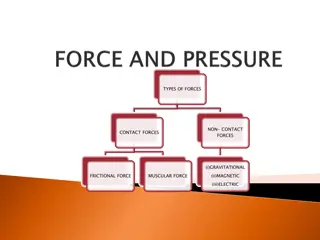Essential Anti-Robbery Training Guidelines for Security Forces
Anti-Robbery Training is crucial for supervisors and personnel handling funds, arms, ammunition, explosives, and narcotics. The training emphasizes responding to robbery situations by complying with demands, ensuring safety, and notifying colleagues. Actions during a robbery include cooperating, avoiding confrontation, and activating duress alarms if available. The focus is on safeguarding lives and resources during potentially dangerous incidents.
Download Presentation

Please find below an Image/Link to download the presentation.
The content on the website is provided AS IS for your information and personal use only. It may not be sold, licensed, or shared on other websites without obtaining consent from the author. Download presentation by click this link. If you encounter any issues during the download, it is possible that the publisher has removed the file from their server.
E N D
Presentation Transcript
86th Security Forces Anti Robbery Training
Anti Robbery Training WHO needs Anti-Robbery Training: Supervisors and personnel who handle funds, and Arms, Ammunition and Explosives (AA&E), and Narcotics must become proficient in the proper methods and appropriate actions for reacting to robbery situations. When do you conduct Anti-Robbery Training: Initially upon assignment and annually thereafter. **Remember, every person performing cash handling operations or having access to AA&E operation is a potential robbery victim.
Anti Robbery Training Actions during an actual robbery. Comply with the robber s demands. Hand over only what is demanded. Do not argue! Hand over whatever is demanded, but ONLY what is demanded Don t tell the suspect Don t rob me, rob John, he has more money than I do DO NOT resist or do anything that would endanger your life of the lives of others NOTE: Armed personnel protecting arms, ammunition and explosives (AA&E), have an inherent responsibility to protect resources dangerous to others. Armed personnel protecting AA&E are not required to comply with the robber s demands. Continued
Anti Robbery Training NEVER try to subdue or apprehend the suspect He or she may be a little crazier than the average person Obey the commands of the suspect explicitly. Experience shows that being cooperative gives the suspect a false sense of security and the suspect may do or say something which will help in the investigation of the crime. Continued
Anti Robbery Training As soon as it can safely be done, notify all co- workers in the facility that a robbery has occurred A good example of this would be to establish a code within your facility such as CODE 13 . After the suspect leaves, communicate with your co-workers, Code 13 at register 4 . Stop all business transactions If a robbery occurs, every employee is responsible in making sure these steps are completed Don t leave the victim(s) to fend for themselves; Try and help out as much as possible without getting in the way
Anti Robbery Training Activate your Duress Alarm (if one is available) The alarm should be activated as soon as the suspect leaves the area AND should be done when it does not endanger the life of the person activating the alarm, the lives of innocent bystanders or customers A follow-up telephone call should be made immediately to the Base Defense Operations Center (BDOC) using the CRIME STOP number: If NO DURESS is available Notify the BDOC via CRIME STOP, immediately after the suspect departs the area
Anti Robbery Training CRIME STOP NUMBER: DSN- 112 CIV- 112
Anti Robbery Training Reporting the robbery to Law Enforcement Any specific information on the description of the individual(s) or hostages should be given to the Law Enforcement Desk at this point Any information which can be gained as to the method of travel (foot or car) is extremely valuable Attempt to obtain as discreetly as possible, type of vehicle, color, model, license plate number, direction of travel, and any other information If using a vehicle, try and see who is driving or if anyone else is in the vehicle
Anti Robbery Training Provide Law Enforcement as many facts as possible Example: This in an emergency. This is Mrs. Jones at the NCO Club. I am reporting a robbery. Two white males have robbed the cashiers cage. They are in a Black Nissan, license plate RR 9857 Use AF Form 439, Robbery Checklist, as a guide and follow any instructions given from BDOC over the phone DO NOT HANG UP THE TELEPHONE until told to do so by BDOC. Always keep the line open until told otherwise
Anti Robbery Training Immediately close the facility If you don t have keys for the door(s), posting an individual at the door is considered securing the facility The Security Forces/AFOSI/CID agents should be met outside by the person in-charge of the facility OR a hostage situation will be assumed The person in-charge and Security Forces/AFOSI/CID should be the only people allowed to enter the facility after the robbery has occurred DO NOT allow anyone else to enter or leave the facility Remember, everyone in the facility is a potential witness to the crime
Anti Robbery Training Protect the Crime Scene Protect any evidence that might be available Do not touch or allow anyone else to touch anything that might have been left by the suspect or in the area used by the suspect If someone approaches an area that you feel the suspect may have touched or came in contact with, tell that individual to step away from the area. Let him/her know the area is part of the Crime Scene
Anti Robbery Training DO NOT discuss the incident Refrain from discussing the incident with anyone except Security Forces/AFOSI/CID or other investigators. Also, attempt to keep others from discussing the incident among themselves. This tends to confuse the facts more than anything else. Sometimes people invariably get the facts mixed up with opinions, not necessarily their own
Anti Robbery Training Keep in mind, INFORMATION IS THE KEY The more information you can provide to BDOC personnel, the more likely it is the suspect will be apprehended. REMEMBER: Your foremost duties in a robbery situation are: To comply with the demands of the individual, remember every possible detail of the individual and incident, and communicate what you remember to BDOC personnel
Anti Robbery Training The Resource Protection office is also available to conduct training or provide assistance for facilities. You may contact the resource protection office by calling 478-2230.
Anti Robbery Training QUESTIONS?






























